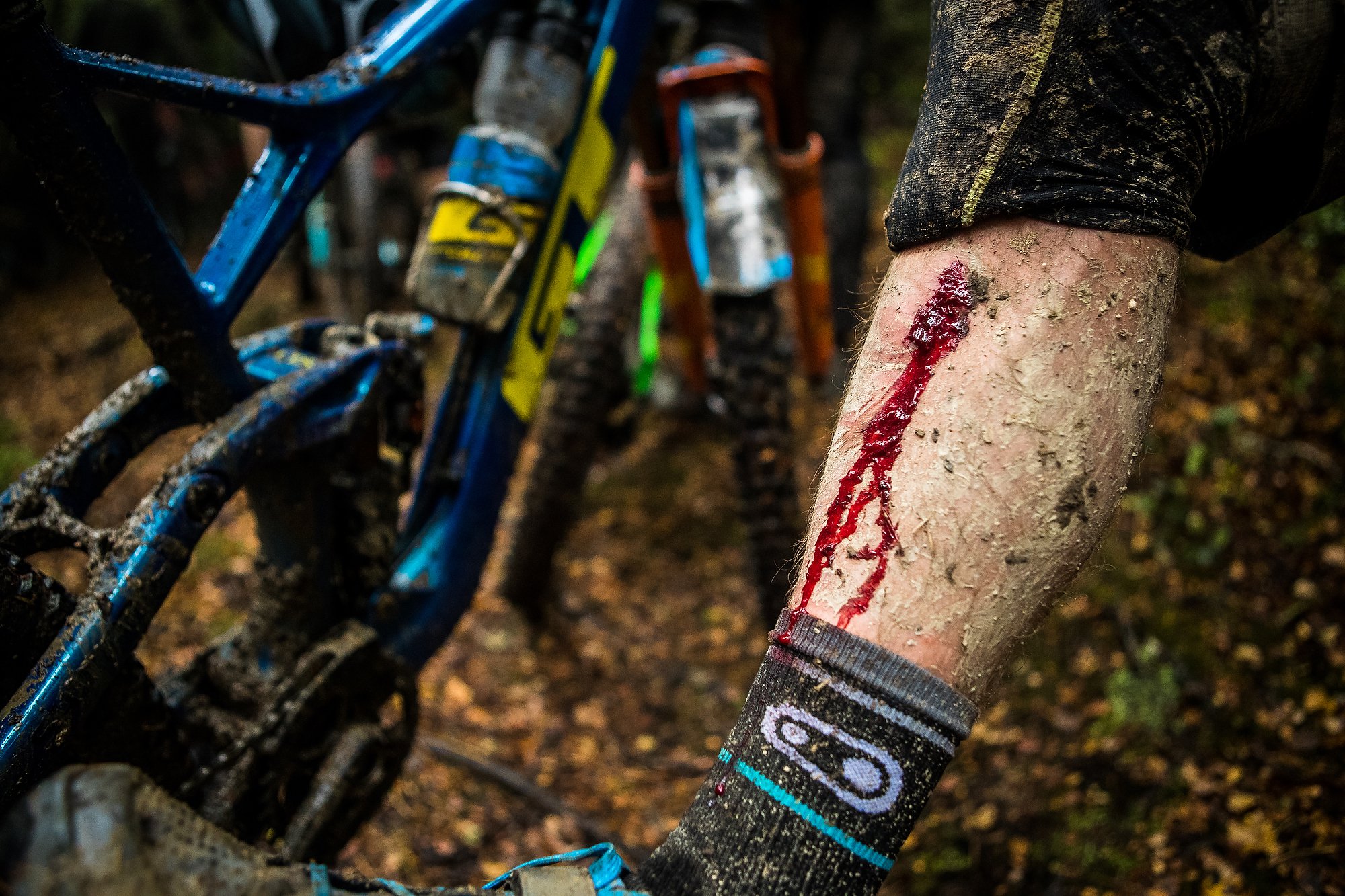Posted by Marissa Cutshall on 27th Oct 2023
Basic First Aid Tips Every Mountain Biker Should Know

Mountain biking, while being an exhilarating sport, can also be quite dangerous, and injuries do happen to riders of all skill levels! Knowing some basic first aid can be crucial for your safety as well as fellow riders you come across on the trails. In any emergency situation it is vital to stay calm, evaluate the situation, and take proper action. This list is not comprehensive and is not meant to take the place of a first aid course but rather a tool to give you basic knowledge while encouraging you to get better prepared.
Let's start with the most basic injury; abrasions and lacerations. Most people have a story about a time they crashed their bike and found themselves scraped up. Thankfully, these injuries are typically minor and generally heal well on their own with minimal interventions
When abrasions and lacerations occur you will want to:
- Apply pressure to stop bleeding using gauze or a clean cloth
- Clean the area using water or an alcohol swab then gently pat to dry
- Apply an antibiotic ointment (ex: Neosporin)
- Close the wound using Steri-Strips for lacerations, or cover the wound with Band-Aids for minor cuts and abrasions
Fractures are a common mountain biking injury that unfortunately takes longer to recover from. Initial care for a fracture is provided here but it will be important to be seen by a medical professional for further treatment.
When a fracture or broken bone is suspected you will want to:
- Call for help
- Stop any bleeding by applying firm pressure
- Do not try to adjust or re-align the injured area
- Immobilize the injured area with a splint
- Our MTB Core first aid kit includes a Sam style splint for wrists and ankles as well as a 3D printed finger splint
- Our MTB Kicker first aid kit includes a safety pin that can be used with your shirt to splint clavicle and shoulder injuries, as well as a 3D printed finger splint
Concussions and head/neck injuries can vary in severity and be quite scary. This is an injury you will not be continuing your ride with. Always ride with a properly fitted helmet, no matter your skill level or the difficulty of the trail.
When a concussion or head/neck injury is suspected, you will want to:
- Call for help
- Do not remove the helmet unless absolutely necessary for providing first aid. Removing the helmet incorrectly can worsen the injury
- If rolling the person is necessary due to vomiting or choking, have one person hold the injured head and neck stable while log rolling
- Do not continue riding until you have consulted your doctor to follow a post concussion return to play protocol
If you are reading this and realizing that you are not prepared for the trails we encourage you to take the time now to help yourself and other riders. Mend It Kits was born out of a desire to make the trails a safer place. We have designed our kits to provide you with the tools necessary to perform basic first aid while being weight conscious, highly capable, and fully usable. Within our MTB Core kit we also provide a medical quick reference card so when your adrenaline is pumping you still have the knowledge to provide basic first aid.
Disclaimer: Nothing in the foregoing should be considered, or be used as a substitute for, medical advice, diagnosis, or treatment. The foregoing does not constitute the practice of any medical, nursing, or other professional health care advice, diagnosis, or treatment. You should always talk to your health care provider for diagnosis and treatment including your specific medical needs.
Source: Mayoclinic.org

